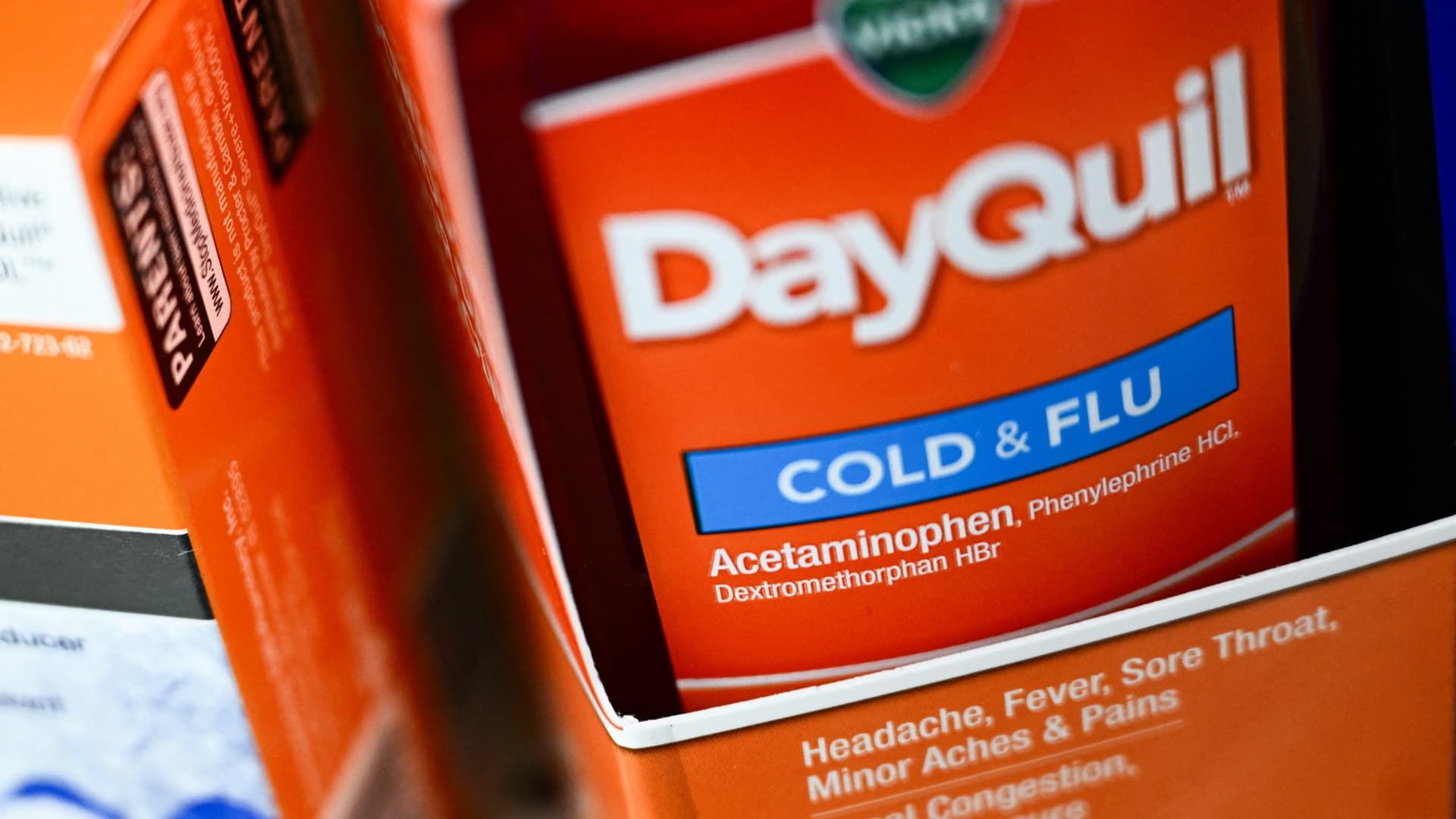A bottle of Vicks DayQuil cold and flu medication containing phenylephrine is displayed for sale at a CVS Pharmacy store in Hawthorne, California, on September 12, 2023.
Patricio T. Fallon | AFP | fake images
The Food and Drug Administration on Thursday proposed ending the use of a common ingredient found in many popular over-the-counter cold and allergy medications.
The agency said a thorough review of available data determined that the ingredient, oral phenylephrine, does not actually relieve nasal congestion. It comes more than a year after FDA advisers unanimously reached the same conclusion.
Based on the data, “we are taking the next step in the process to propose eliminating oral phenylephrine because it is not effective as a nasal decongestant,” Dr. Patrizia Cavazzoni, director of the Center for Drug Evaluation and Research at the FDA. release.
The FDA said the proposed order is not based on safety concerns and is not yet final, meaning companies can still market over-the-counter medications containing oral phenylephrine for now. But a final decision would force pharmacies to clear shelves of hundreds of products containing oral forms of the ingredient, which is found in versions of drugs such as NyQuil, Benadryl, Sudafed and Mucinex.
Last year, CVS said it has already taken steps to recall certain medications containing oral phenylephrine.
A final order would also require drug makers like Procter & GambleBayer and Johnson & Johnson split Kenvue reformulate many of its oral cold and allergy products.
Phenylephrine is believed to relieve congestion by reducing inflammation of the blood vessels in the nasal passages. Without oral phenylephrine on the market, patients will likely seek aerosol versions of the drug or other medications with different ingredients, which the FDA's decision does not affect.
Retail stores like CVS and Walgreens It could also be affected: Those stores sold 242 million bottles of drugs containing phenylephrine in 2022, generating nearly $1.8 billion in sales, according to a presentation by FDA staff last year.
The FDA could specifically revoke the drug's over-the-counter designation as “generally recognized as safe and effective.” The designation, typically used for older drugs, allows drug makers to include an ingredient in over-the-counter products without the need to submit an application to the FDA.
Last year's FDA advisory meeting was prompted by researchers at the University of Florida, who asked the agency to remove phenylephrine products from the market based on studies showing they failed to outperform placebo pills in patients with cold and allergic congestion.
The same researchers also questioned the drug's effectiveness in 2007, but the FDA allowed the products to remain on the market pending additional research.
However, FDA staff, in briefing documents released before the panel meeting last year, concluded that oral formulations of phenylephrine do not work at standard doses or even higher doses. The staff said that only a very small amount of phenylephrine reaches the nose to relieve congestion.
Representatives of the Consumer Healthcare Products Association, a group that represents makers of over-the-counter drugs, did not offer any new evidence to counter the FDA staff's conclusion about phenylephrine during last year's meeting.
But the group argued that removing oral phenylephrine from the market would be a significant burden on consumers.
The group shared a survey that found 1 in 2 households in the U.S. used an oral decongestant in the past year. It also found that people prefer oral decongestants over nasal spray by a margin of 3 to 1.
Phenylephrine became the leading decongestant in over-the-counter cold and allergy medications in 2006, when sales of another decongestant, pseudoephedrine, were restricted in the United States.
Pseudoephedrine was placed behind the pharmacy counter because it can be misused to produce methamphetamine, a highly addictive stimulant drug that affects the central nervous system.












